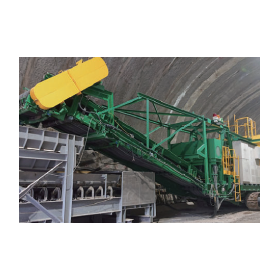Seamlessly measure ultra-wideband vibrations.
The "Robo Sensor" is an extremely thin wire-type vibration sensor with a diameter of 0.5mm. Unlike conventional accelerometers, it does not produce noise derived from inertial moments, and it is not affected by electromagnetic noise like other wire-type vibration sensors. As a result, it enables seamless measurement over an ultra-wide bandwidth that surpasses the conventional wisdom of vibration sensors, allowing for high sensitivity without being troubled by noise. It has become possible to accurately capture the wear of tools in processing sites and the vibrations of machine components such as bearings, enabling the detection of early signs of failure and facilitating appropriate maintenance activities. 【Features】 ■ Wide bandwidth (from 0.1Hz to over 3MHz) ■ Does not pick up electromagnetic noise and does not generate noise derived from inertial moments. *For more details, please download the PDF or feel free to contact us.
Inquire About This Product
basic information
Basic Information Wire Sensor "Piezoelectric Wire Sensor" 【Examples of Use (Excerpt)】 ■Industrial and Robotics Field ・Predictive Maintenance (Failure Prediction) ・Tool Vibration Sensor ・Tactile Sensor for Robots ■Medical and Nursing Care Field ・Massage Equipment for Nursing Care ・Sensors for Prosthetic Arms and Legs ・Sensors for Intrusion and Step-on Alarm Devices *For more details, please download the PDF from the link below or feel free to contact us. https://www.ipros.jp/preview/ Phone (Head Office): 053 438 1700 Tokyo Branch (Voicemail Only): 050 5372 0788 Email: info@robosensor.co.jp
Price information
Please contact us.
Delivery Time
※Please contact us.
Applications/Examples of results
For more details, please contact us.
Company information
We have developed a wire-like sensor called "Robo Sensor" that can detect human body movements, pulse, and vibrations with ultra-high sensitivity and precision. Thanks to its unique noise-free structure, it can measure ultra-wideband frequencies directly from 0.1 Hz to 3 MHz with extremely low noise. As a result, it is widely used in various fields as an optimal sensor for predicting mechanical and robotic failures, as well as for vital measurements. 1) Measurement of various vibrations from robots, industrial equipment, and infrastructure facilities. It accurately captures changes in vibrations, making it an ideal sensor for preventive maintenance and condition-based monitoring (CBM), utilized by many users. 2) Utilization in work monitors with tactile sensors and haptic gloves. It can measure extremely small contacts that conventional sensors could not detect. 3) Also optimal as a vital measurement sensor. It can measure pulse rates, heart sounds, respiratory sounds, voice vibrations (including bone conduction), and even ultrasound diagnostics, covering a range from low frequencies to ultrasound. Its application in health checks and human diagnostics using various sound waves is being explored. Of course, robots can also perform various measurements similar to the human body, and their utilization is expanding. Additionally, applications in construction and infrastructure are being considered across various fields.





![[Case Study] Completed a conveyor line including a drop-down conveyor in a short period of time.](https://image.www.ipros.com/public/product/image/d0f/2000196376/IPROS5834806526185066397.jpg?w=280&h=280)



